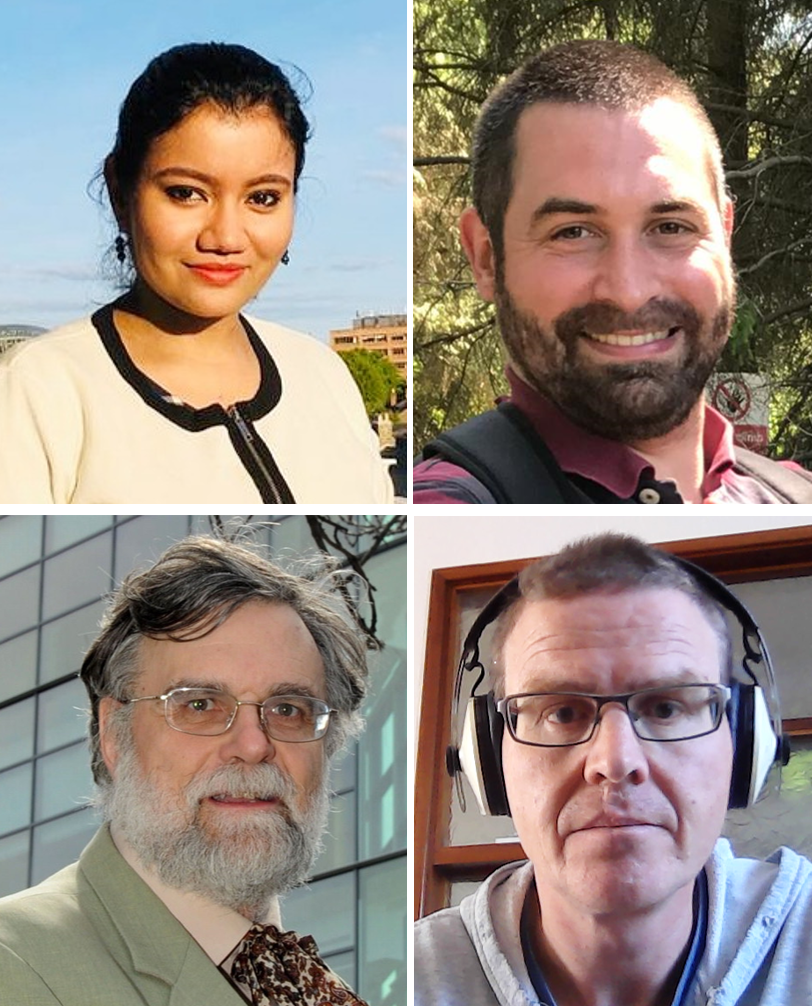
10 October, 2024
Posted: 18 November, 2020

You and your colleagues’ recent discovery of ultra-fast magnetic switching has been published in Nature Communications and gained media attention. Can you tell us more about this research, your role in it, and how this breakthrough could transform fibre optical communications?
We are living in an information age, where knowledge and communication are inseparable from economic wealth. The rapidly increasing volume of data in the internet cloud is stored magnetically in data centres spread across the globe, where the information is encoded in the form of binary digits 0 and 1. They are linked by fibre optic cables. The speed of communication is determined by the time to switch a 0 to a 1 and how frequently we can do it.
In the CRANN photonics lab at Trinity College Dublin, we shoot ultrashort light pulses only a hundred femtoseconds long (1 fs = 10-15 s, a quadrillionth of a second) onto thin magnetic films and study their response. The pulse causes a sudden heating of the electrons by about 1,000 degrees, which disrupts the magnetization. I have recently discovered that such treatment to films of the new alloy of manganese, ruthenium and gallium, known as MRG (a main focus of research in our group) causes its magnetization to switch direction. The two directions can be used to represent binary 1 and 0. This switching is very fast. It takes less than 12 picoseconds (1 ps = 10-12 s), and the magnetization direction toggles back and forth with each laser pulse. As the magnetic states don’t need external power for stabilization, they are potentially useful for switching data streams. We believe that MRG is a fundamental building block to realize ultrafast optical switches that can be used for multiplexing communication based on optical fibres. This could increase the capacity of the existing fibre optic network ten-fold.
What inspired you to pursue research in this area?
During my Masters in IIT Delhi, India, I did a small project on magnetic properties of half-metallic Fe3O4 films. There I first learned about the research field known as spintronics and was fascinated by it. Magnetism is a very ancient phenomenon, with a vast presence ranging from Earth’s magnetic field and electromagnetic waves (like light and radio waves) to the magnetism of electrons in solid materials. The concept of using magnets in a miniaturized form for future data technology appeared very interesting, yet challenging. In my PhD in SNBNCBS, India, I worked on an interdisciplinary subject involving light and magnetism. I learned about recent discoveries showing that light could control magnetic properties in multiple ways. I will soon move to the Technion in Israel. My aim is to study light-magnetism interaction on an even shorter timescale: the attosecond (1 as = 10-18 s), which is the fundamental timescale for sub-atomic phenomena.
In your opinion, why is your research important?
From the application point of view, this discovery is one more step towards achieving terahertz (picosecond) data processing. MRG is the second material found to switch its magnetisation through a thermal process using light only. In comparison to its predecessor, GdFeCo, it is far more suitable for implementation in spintronic devices such as, for instance, optomagnetic memories. Further experimental and theoretical studies on MRG and its chemically tailored successors could lead to ultrafast memory and data transfer.
Fundamentally, we identified an alternative mechanism for switching in MRG compared to GdFeCo. It challenges the idea that a rare earth element such as gadolinium is necessary in designing new switching materials. I am sure that my work in Trinity will trigger many further theoretical studies.
What are some of the greatest challenges facing researchers in your field? What are the greatest opportunities?
The fundamental component of present chip-based electronic technology is an electrically operated switch, the semiconductor transistor. Behind the huge data revolution in the past decade lies the miniaturization and accumulation of ever more transistor switches. However, its progress is limited by the heat consumption and restrictions due to fundamental limits. An alternative is to use magnetic switches. As the magnetic state naturally retains its direction, it provides energy-efficient and non-volatile memory. However, the challenge is how we can change the magnetic state without applying a huge magnetic field to it. In particular, we want to change the state of individual bits without affecting the system globally. Fast optical pulses can solve all the issues. Therefore, the challenge remains to develop a material whose magnetization will respond perfectly to optical pulses.
How has the Irish Research Council supported you in your work?
The Irish Research Council gave me the opportunity to work with colleagues in Prof. J. M. D. Coey’s esteemed research group in Trinity College Dublin. During my Fellowship, I attended the JEMS conference in 2019 at Uppsala University, Sweden, where I interacted with the scientific research community and heard their opinion of my experimental work. I am hopeful that my research findings will positively influence the future direction of spintronics research and contribute to the visibility of Irish research worldwide.